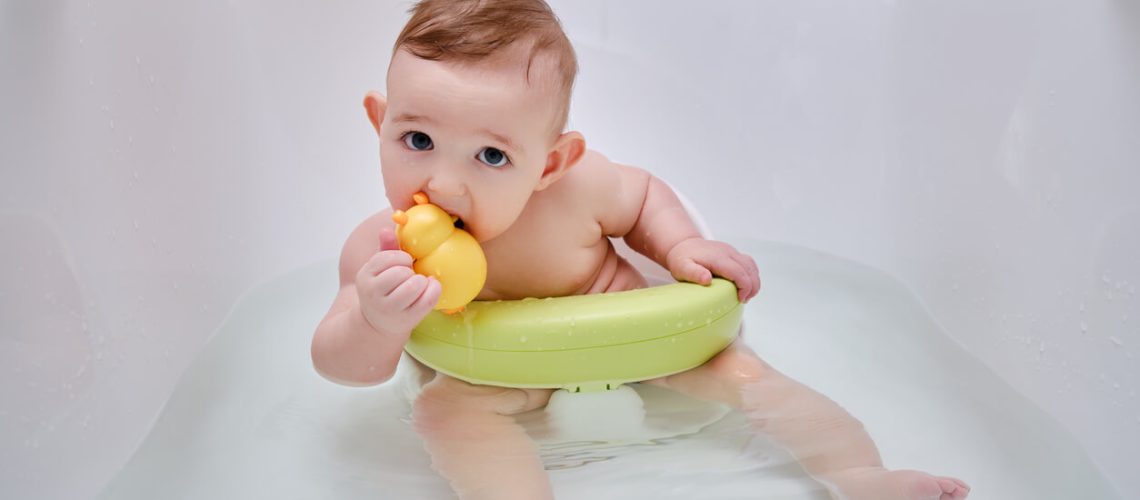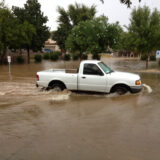Table of Contents
Infant Water Safety Guide
Infant water safety with parents, caregivers, and legal professionals is the utmost importance while supervising children. Ensuring the safety of infants around water is priority number 1, as water-related accidents can have severe and sometimes fatal consequences. This topic is particularly relevant given the potential risks associated with infant drowning and other water-related accidents.
In Arizona, the accidents of wrongful deaths from faulty bathtub overflow drains have highlighted the need for increased awareness and preventive measures. This article aims to provide a comprehensive guide to infant water safety, emphasizing the importance of preventing bathroom accidents, the role of negligence, and the impact of inadequate knowledge or skills.
Guide to Infant Drowning Prevention
Bath Time Basics
The significance of safe bath practices cannot be overstated. Infants are at a high risk of drowning, even in shallow water, which makes constant supervision essential during bath time. Here are some important tips for ensuring safe bathing practices:
- Constant Supervision:During bath time, an adult should always be within arm’s reach of the infant. Touch supervision is the level of supervision that ensures prompt intervention when needed.
- Water Temperature: Always check the water temperature before placing the baby in the tub. The water should be warm, not hot, to prevent burns and ensure comfort.
- Safe Environment: Use non-slip mats in the bathtub and bathroom to prevent slipping. Keep all electrical appliances away from the bathing area to avoid electrical hazards.
- Avoid Distractions: Do not let phone calls, doorbells, or other interruptions divert your attention during bath time. A momentary lapse in supervision can lead to tragic consequences.
Beyond Bath Time
While the bathtub is a major risk zone, other bathroom hazards must also be taken care of. Here are some additional safety measures to consider:
Toilet Safety: Keep toilet lids down to prevent infants from accessing the water. Consider using toilet locks to ensure they remain closed.
Drain Plugs: Remove bathtub drain plugs when not in use to prevent the risk of drowning if an infant gains access to the tub.
Accessibility: Make sure to close the bathroom door when it’s not in use. Also, Install a safety lock on the bathroom door to ensure that unsupervised children do not enter.
Pool Safety
Although this article primarily focuses on bathroom safety, pool safety is also critical for infants. Drowning in pools is a significant risk for young children. To ensure pool safety:
- Fences and Alarms: Install swim safety devices like a four-sided fence with a self-latching gate around the pool. Pool alarms can alert caregivers if someone enters the pool area.
- Parental Supervision: Always supervise infants around the pool, even if they are not swimming. Never leave them unattended near the water.
Role of Negligence and Inadequate Knowledge
Legal Definition of Negligence
Negligence plays a important role in legal claims related to infant water safety. Legally, negligence involves failing to exercise the care that a reasonably careful person would exercise in similar circumstances. In the context of bathroom safety, negligence can be categorized into two types:
- Parental Negligence: This occurs when parents or guardians fail to supervise their children adequately or neglect to implement necessary safety measures.
- Third-Party Negligence: This includes caregivers, babysitters, or property owners who fail to ensure a safe environment for infants.
Several cases illustrate how negligence can lead to accidents and wrongful death claims. For example, in one tragic accident, a babysitter in Arizona was found liable for the drowning death of a child left unattended in a bathtub. The court ruled that the babysitter’s failure to provide adequate supervision constituted gross negligence.
Another case involved a landlord who did not repair a faulty bathtub overflow drain, leading to an accidental drowning. The property owner was held accountable for not maintaining safe premises, highlighting the legal responsibilities of property owners to ensure the safety of their facilities.
Inadequate Knowledge or Skills
Understanding the risks associated with water safety for infants is important. Many parents and caregivers may lack awareness regarding bathroom safety for infants, leading to dangerous situations. Common misconceptions include:
- Perceived Safety of Shallow Water: Many people believe that infants cannot drown in shallow water. However, infants can drown in as little as an inch or two of water if left unattended.
- Underestimating the Need for Supervision: Some caregivers may think that being in the same room is sufficient. In reality, close and direct supervision is necessary.
- Misjudging Infant Abilities: Caregivers might overestimate an infant’s ability to stay above water or their understanding of water dangers, leading to less vigilant supervision.
Education and Training on Infant Drowning Prevention
Importance of Educating Parents and Caregivers
Education and training are vital in preventing water-related accidents. Educating parents and caregivers about the risks and necessary safety measures can significantly reduce the likelihood of accidents. Awareness programs can eliminate common misconceptions and provide practical tips for ensuring infant safety.
Available Resources and Workshops in Arizona
In Arizona, various resources and workshops are available to educate parents and caregivers about infant water safety. Local health departments, hospitals, and community centers frequently offer classes on child safety, also including water safety tips and safe baby swimming lessons. Organizations such as the Arizona Department of Health Services and the Drowning Prevention Coalition of Arizona provide valuable resources, including:
- Safety Classes: Many hospitals and community centers offer safety classes that cover infant CPR, first aid, and water safety.
- Workshops: Workshops focusing on infant water safety practices and preventive measures are available. These workshops often include practical demonstrations and hands-on training.
- Online Resources: Numerous websites provide educational materials, videos, and checklists to help parents and caregivers understand and implement water safety measures.
Duty of Care for Infants in Water-Related Situations
The duty of care for infants involves taking all necessary precautions to ensure their safety around water. This includes constant supervision, implementing safety measures, and educating caregivers about the risks and safety protocols. Negligence in fulfilling this duty of care can lead to tragic outcomes and legal repercussions.
Infant water safety is a key concern that requires the utmost attention from parents, caregivers, and property owners. The risks associated with water-related accidents are severe, and negligence or inadequate knowledge can lead to devastating consequences. By adhering to safety guidelines, providing constant supervision, and ensuring that all caregivers are well-informed, many of these tragic accidents can be prevented.
Legal Implications
The legal consequences for caregivers and property owners in scenarios involving negligence are significant. Caregivers found negligent in their duties can face criminal charges, civil lawsuits, and severe financial penalties. Property owners can be sued for premises liability if their negligence contributes to an accident.
The Sorenson Law Firm is dedicated to helping victims of such unfortunate accidents, offering legal services to those affected by wrongful death due to faulty bathtub overflow drains. Prioritizing safety measures and seeking legal advice when necessary can make a significant difference in preventing bathroom accidents and protecting the well-being of infants.
For more information on legal services related to wrongful death claims from bath accidents, visit The Sorenson Law Firm’s website.
Additional Information
To learn more about how to prevent your child from drowning, explore the following resources.
- StaySafe.org – Infant Water Safety Guidelines: This comprehensive guide offers practical tips and recommendations to ensure your infant’s safety around water.
- Consumer Product Safety Commission (CPSC) Public Safety Resource: Access detailed safety standards and regulations related to infant water safety directly from the CPSC.
- Safety Standard for Infant Bath Tubs – Federal Register: This document outlines legal standards and requirements for infant bath tubs to enhance safety and prevent accidents.
These resources provide valuable information to support the insights shared in our ultimate guide and legal services on infant water safety.








